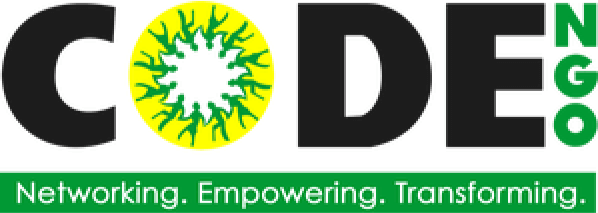Community involvement: a must in DRRM and poverty reduction planning
Mifael Llauderes, our Area Coordinator for Tagapul-an and Tarangnan, Samar, for CODE-NGO’s Citizens’ Monitoring of LGU Performance (CML) Project, reports first-hand in the aftermath of typhoon Yolanda, the inescapable link between poverty and disasters, and the urgency of involving communities and in building their capacities in disaster risk reduction and management (DRRM).
——————————————————————————————————————————————————————-
The current situation
We live in the communities of the riskiest towns, in the riskiest provinces, of the 3rd riskiest country in the world; and these communities are in the poorest towns, in one of the poorest provinces, of one of the poorest countries in the world. That is a common and permanent backdrop of our nation’s poor societies. Poverty and Risks are like intimate, and our country is their spawning ground, they spawn disasters.

The poorer we are the more vulnerable we become. Poor farmers, for instance, situate their communities near the fertile lands in the foothills and forest fringes where they expose themselves to varying degrees of risks, from snake bites to landslides. Poor Fisherfolks are exposed to tidal disturbances. They brave the waves and probe the depths to find a living, and they literally hold their breath to stay alive. These exposures and vulnerabilities towards the hazardous elements like typhoons, earthquakes, and tsunamis, to name a few, are the least considered issues in the government halls unless it is the aftermath and a lot has been irreparably damaged.
Disaster Risk Reduction Management and Poverty Reduction must be at the forefront in any developmental planning if we are to dampen the effects of natural destructive phenomena that frequent our country, and it has to be participative. This approach was presented to the 60 participants of the Local Anti-Poverty Planning workshop composed of Civil Society Organization (CSO) core groups and Local Government Unit (LGU) representatives of the 6 municipalities covered in the CODE-NGO’s Citizen’s Participation in Monitoring LGU Performance and Development Planning for Poverty Reduction (CML) project in Samar Island, which was held at the I’s Plant Hotel in Calbayog City last February 26-27, 2014. This particular piece tackled the importance of the communities’ role in planning for sustainable and resilient development through poverty reduction initiatives added with DRR disciplines. This is a thrust towards progress and resilience.
A Post-Disaster Yolanda observation

Disaster response from the international humanitarian communities came and they were rather generous… they established coordination systems among themselves and they coordinated with the government and communities where they were to put up a station (although they admitted nothing prepared them for what they have seen the first time they set foot on the deluged grounds). It would have greatly facilitated the channelling of support and the distribution of assistance if the affected areas have been organized, and distribution mechanisms have been in place in every barangay. It would have been easier if there had been ready coordinating mechanisms and pre- and post-disaster information system where the humanitarian groups can just hook up and find factual information from which to rapidly calculate, formulate fitting interventions.
After 2 to 3 days and there is still no sign of organization or planned action from the local leadership, or at least a semblance of civilization in the streets– the brute nature of man emerges… the survival mode sets in… and one would be willing to do anything just to survive… then lawlessness erupts! After a catastrophe, people have an unusually high level of alertness. Any false information or public pronouncement will be taken seriously, and almost irrationally, that by itself could spell chaos and disaster.
But it would not happen in a strong community, where each family is equipped with basic disaster risk reduction knowledge and sets of operational plans readily deployable when calamity strikes; plans that flow laterally and along the way unite with the bigger plan of the barangay, municipality, or city. Community involvement is a must. It is the most effective way in generating factual information, through the help of strong local network of sectoral groups and/or individuals who are committed to help uplift their poverty-disaster stricken lands. And every community has many of such individuals. They just have to be capacitated.
Capability Development

We cannot prevent these natural calamities from happening but we can certainly mitigate, prepare, plan contingencies to reduce the risk, and in the aftermath, respond accordingly in order to rebuild better in the shortest time possible. The external experts have no absolute know-how when it comes to our respective communities. Therefore it has to be the very people who run before the cascading hillside, the people who scamper uphill at the sound of the tsunami alert; it is them who should take part in the planning processes. Then the experts who have the technical capacity and professional mandate should come in to build up and develop their capabilities, to guide in formulating the mechanisms, plotting out specific plans for specific situations, etc… with full utilization of capacities and resources innate in the communities. – Mifael Llauderes, Area Coordinator for Tagapul-an and Tarangnan, Samar, CML Project (The CML project is being supported by the European Union under its Non-State Actors and Local Authorities Program.)
Community involvement: a must in DRRM and poverty reduction planning

You must be logged in to post a comment.